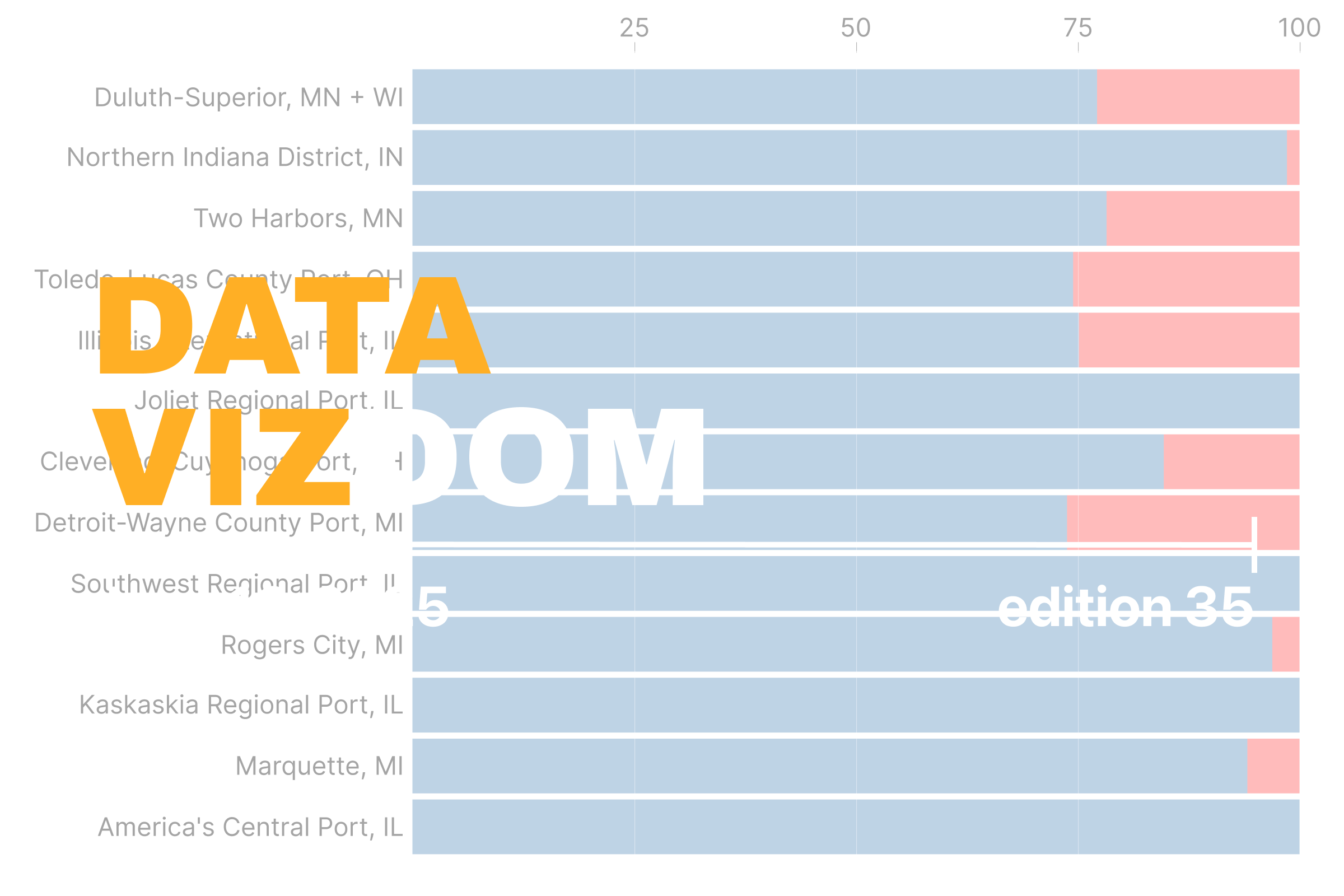The St. Lawrence Seaway serves as a maritime highway, connecting Canadian businesses to Europe and extending access to markets in Asia and Africa. However, vessel size restrictions through the seaway curb the types of cargo that can reach ports further inland into the Great Lakes. As a result, containerized traffic remains limited, with much of it instead routed intermodally through the Port of Montreal.
Yet, Great Lakes ports move significant volumes of bulk commodities, playing a crucial role in regional industrial supply chains. These ports offer vital inland maritime connections for both Canada and the United States, during the warmer months when shipping routes are navigable. One such example is iron ore shipped from Minnesota’s Mesabi Iron Range through the Port of Duluth to steel mills in Gary and Cleveland1.
The interactive chart below shows the share of domestic and international traffic handled at U.S. Great Lakes ports that moved over 5 million short tons in 2022. Ports are ordered by total tonnage, which is displayed when hovering over each bar. The data reveals that these ports primarily move commodities domestically, underscoring the importance of the Great Lakes as a corridor for internal trade.
The Port of Duluth, the 20th largest in the U.S. by tonnage, is the largest and busiest on the Great Lakes, with over 75% of its traffic being domestic. The next bar represents the combined ports of Indiana along Lake Michigan, which are almost entirely oriented toward the domestic market. In total, of the thirteen ports with traffic exceeding 5 million short tons, only six have more than 15% of their volume tied to international markets.
Navigability constraints through the St. Lawrence Seaway and seasonal ice closures have long shaped the Great Lakes’ shipping landscape. However, as climate change gradually extends the shipping season, these ports stand to gain new opportunities. Given the significantly lower carbon footprint of maritime transport, expanding Great Lakes shipping could be a key part of more sustainable and resilient supply chains. Recognizing this potential will be crucial for developing forward-looking policies that fully harness the corridor’s strategic benefits.
What better way to understand concepts big and small than through data visualizations? In this blog series, we explore timely themes in economics and transportation, drawing on data from the SLGL dataHub.
